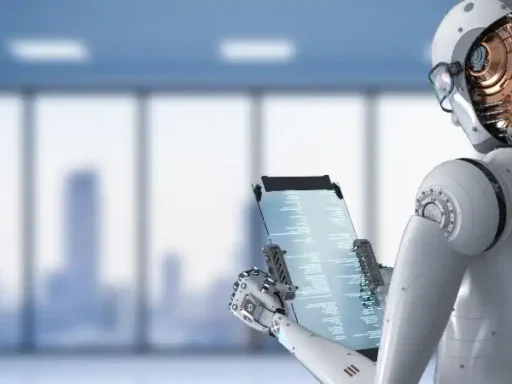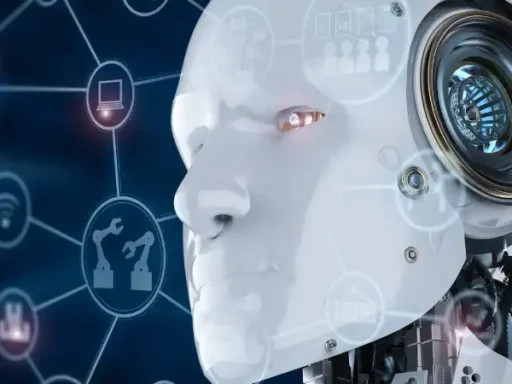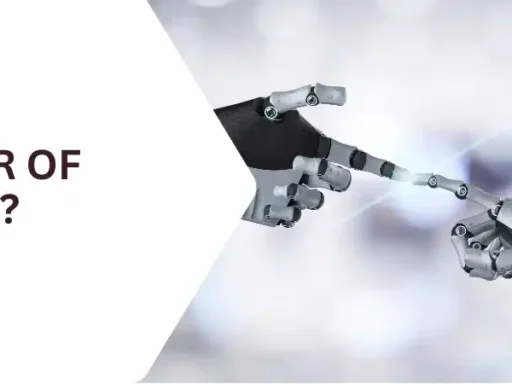Imagine a world where humanoid robots walk among us, performing tasks we never thought possible. Think of robots that move like humans, understand emotions, and can perform complex tasks with ease. Sounds like something out of a science fiction movie, right? Well, not anymore. These cutting-edge machines are real, and they’re transforming industries and everyday life in ways that are both thrilling and groundbreaking.
But what exactly are humanoid robots used for? Why are they becoming such a crucial part of the future of robotics and artificial intelligence?
This comprehensive guide will explore the many ways humanoid robots are being used today, from entertainment to healthcare, manufacturing, and beyond. Keep reading to dive deep into the incredible potential these robots hold for reshaping our world.
What are Humanoid Robots?
Before diving into the practical uses of humanoid robots, it’s essential to understand what these machines are. A humanoid robot is a robot that mimics the human body’s structure, behavior, and sometimes even the appearance. These robots typically have a torso, head, arms, and legs, making them look and function like humans. Some even have facial features, enabling them to make expressions and communicate more effectively with people.
Humanoid robots are equipped with advanced sensors, AI systems, and actuators, which allow them to navigate their environment, understand and interact with human beings, and perform specific tasks in a more human-like way than traditional robots.
The Evolution of Humanoid Robots
The concept of robots resembling humans dates back centuries in human imagination. However, humanoid robots as we know them today have come a long way since the first mechanical automata. From simple machines built to mimic human movements to today’s advanced robots, the evolution has been driven by the desire to make robots more adaptable to human environments and tasks.
Key advancements in artificial intelligence, machine learning, sensor technology, and robotics engineering have paved the way for modern humanoid robots that are smarter, faster, and more capable than ever before.
But what are these humanoid robots used for today? Let’s explore their most prominent applications.
Practical Uses of Humanoid Robots
Healthcare and Assistance
Perhaps one of the most critical areas where humanoid robots are making a profound impact is in healthcare. With an aging population in many parts of the world, there’s a growing need for assistance in elderly care, rehabilitation, and patient monitoring. Humanoid robots are stepping in to help, offering both physical and emotional support.
Elderly Care and Assistance
Robots like Pepper and NAO, developed by SoftBank Robotics, are designed to assist elderly individuals with tasks like reminding them to take their medication, guiding them through physical exercises, or simply keeping them company. These robots can interact with users, recognizing faces, speech, and even emotions, making them a valuable tool in caregiving environments.
Rehabilitation and Physical Therapy
In rehabilitation centers, humanoid robots are used to assist patients recovering from strokes or injuries. Robots like Robear, developed in Japan, are capable of lifting patients, helping them move from beds to wheelchairs, and assisting in physical therapy exercises. These robots provide much-needed relief to healthcare workers, reducing the physical strain of manual patient handling.
Surgery Assistance
In operating rooms, humanoid robots equipped with precise and dexterous movement capabilities assist surgeons in performing complex surgeries. While the Da Vinci Surgical System is not a true humanoid, it is one step toward the future of more advanced robotic surgery systems. Future humanoid robots could potentially perform autonomous surgeries or assist in ways we can’t yet fully imagine.
Education and Research
Humanoid robots have become powerful tools in education, offering interactive learning experiences that engage students in ways traditional teaching methods cannot. They help foster interest in STEM (Science, Technology, Engineering, and Mathematics) subjects by offering hands-on experiences with programming, robotics, and artificial intelligence.
Teaching Assistants
Robots like NAO are already being used in classrooms around the world. They can act as teaching assistants, guiding students through lessons, answering questions, and providing demonstrations. For children with special needs, these robots can offer personalized support, adapting lessons to the child’s learning pace.
Research Platforms
In research institutions, humanoid robots serve as platforms for developing and testing new algorithms in AI and robotics. Scientists and engineers use these robots to study human-robot interaction, improving their understanding of how machines can best work alongside humans in real-world environments.
Entertainment and Hospitality
The entertainment industry is no stranger to humanoid robots. From theme parks to hotels, these robots are adding a futuristic touch to customer experiences.
Theme Parks and Attractions
In theme parks like Disneyland and Universal Studios, humanoid robots are used to bring characters to life. Robots with advanced facial recognition, body movements, and voice synthesis capabilities interact with visitors, creating more immersive and magical experiences.
Hotels and Restaurants
In Japan, the Henn-na Hotel made headlines by being staffed almost entirely by robots, including humanoid robots at the front desk who check in guests, answer questions, and provide concierge services. Similarly, in restaurants, robots are being used to take orders, deliver food, and even entertain customers while they wait.
Manufacturing and Industrial Applications
Although traditional industrial robots have long been used in manufacturing, humanoid robots are now finding their place on factory floors. Their ability to move and interact in human-like ways allows them to take on more versatile tasks that previously required human workers.
Collaborative Robots (Cobots)
Unlike traditional industrial robots, which are often isolated behind cages for safety reasons, humanoid robots are designed to work alongside human workers. These cobots are programmed to perform repetitive or dangerous tasks, such as assembling parts, handling hazardous materials, or operating in environments too risky for humans. This allows human workers to focus on more creative and strategic work.
Logistics and Warehouse Management
Robots like Handle, developed by Boston Dynamics, are designed for logistics and warehouse environments. These robots can move around, pick up, and organize products, offering an efficient solution for inventory management and order fulfillment. While not strictly “humanoid,” the addition of arms and legs allows for far greater flexibility and adaptability in handling complex logistics tasks.
Security and Surveillance
Humanoid robots are increasingly being used in security and surveillance roles. Equipped with cameras, facial recognition software, and sensors, these robots can patrol public spaces, identify potential threats, and report suspicious activities.
Autonomous Security Patrols
Companies like Knightscope have developed humanoid robots designed for security patrols in areas such as shopping malls, parking lots, and office complexes. These robots can monitor their surroundings 24/7, alerting human operators to any anomalies. They are also capable of de-escalating situations by providing a presence that deters criminal activity.
Disaster Response
In situations where humans cannot safely enter, such as during a fire, earthquake, or hazardous material spill, humanoid robots can be sent in to assess the situation, locate victims, and provide crucial information to rescue teams. Robots like Atlas, developed by Boston Dynamics, have already demonstrated their ability to navigate challenging environments, making them invaluable in disaster response scenarios.
The Role of Humanoid Robots in Everyday Life
While many of the current uses of humanoid robots are focused on industries like healthcare, manufacturing, and security, they are slowly making their way into everyday life. From personal assistants to home companions, the potential applications are vast.
Personal Assistants and Smart Homes
With advancements in AI, robots are starting to become personal assistants in the home. Humanoid robots like Sophia and Jibo are designed to assist with daily tasks, control smart home devices, remind users of important events, and even hold conversations. These robots are not just functional; they offer a more human-like interaction, bridging the gap between humans and machines in the home.
Companionship
For individuals who live alone or those suffering from loneliness, humanoid robots are being designed as companions. These robots can provide comfort through conversation, emotional recognition, and even physical gestures, such as handshakes or hugs. While they are not a replacement for human interaction, they offer a form of companionship that can be particularly beneficial for the elderly or those with limited social connections.
Future Applications of Humanoid Robots
As technology advances, the possibilities for humanoid robots will only continue to expand.
Some potential future applications include:
-
Space Exploration
Humanoid robots could be used for space missions, performing tasks that are too dangerous or physically demanding for astronauts.
-
Autonomous Transportation
Imagine a future where humanoid robots operate vehicles, providing public transportation or personal chauffeur services.
-
Retail and Customer Service
Humanoid robots may soon replace human workers in retail environments, assisting customers, restocking shelves, and managing inventory.
You Might Be Interested In
- Who Creates Robots?
- What Are The Disadvantages Of Robotic Hip Replacement?
- How Many Ai Robots Are There?
- What Are 5 Different Types Of Robots?
- What Are The Four 4 Types Of Robotics?
Conclusion
The future is bright for humanoid robots. From healthcare and education to manufacturing and personal assistance, these robots are poised to transform industries and improve the quality of life for people around the world. As technology continues to advance, humanoid robots will likely become an even more integral part of society, performing tasks that we once thought were only possible by humans.
While there are still challenges to overcome, such as ethical concerns and the cost of development, the trajectory is clear: humanoid robots are here to stay, and their impact on our world will only grow.
FAQs about humanoid robots
What are the uses of a humanoid robot?
Humanoid robots are used in a variety of industries, with applications that range from healthcare to entertainment and manufacturing. In healthcare, they assist with elderly care, patient monitoring, and even physical rehabilitation. These robots can also act as companions, helping those who are elderly or socially isolated by offering emotional support and reminders for daily tasks.
In industries such as manufacturing and logistics, humanoid robots are deployed to carry out repetitive tasks, improve efficiency, and collaborate with human workers in ways traditional machines can’t. Furthermore, they are being integrated into customer service, education, and security, making them highly versatile tools for improving productivity, enhancing user experience, and ensuring safety.
Humanoid robots are also used for research purposes, providing a platform for studying human-robot interaction, developing new AI algorithms, and testing robotic movement and perception in real-world settings. They have become vital in educational environments, offering interactive and engaging learning experiences for students, especially in the fields of STEM.
With their ability to mimic human movements and behaviors, humanoid robots are expanding into entertainment, serving as hosts, performers, and interactive characters in theme parks, exhibitions, and promotional events.
What are the 7 advantages of humanoid robots?
The advantages of humanoid robots are numerous and far-reaching. First, they provide human-like interaction, which is crucial for tasks that require emotional engagement or communication. Second, they can work in environments that are unsafe for humans, such as hazardous manufacturing environments or disaster-stricken areas.
Third, humanoid robots can perform tasks with precision and consistency, making them ideal for repetitive tasks in sectors like manufacturing and logistics. Fourth, they can assist in elderly care, providing both physical and emotional support, which is especially valuable as the global population ages.
Fifth, humanoid robots offer personalized services, such as educational support for students or customized interaction for customers in retail settings. Sixth, they have the ability to multitask, handling a wide range of activities simultaneously, which increases efficiency and productivity.
Finally, humanoid robots have the potential to learn and adapt to their environment through advanced AI, improving over time and offering solutions that are increasingly tailored to specific human needs. These advantages make humanoid robots valuable across multiple industries, ensuring that their role in society will continue to grow.
How do humanoid robots help humans?
Humanoid robots assist humans in a variety of ways, primarily by taking on tasks that are repetitive, dangerous, or require high precision. In healthcare, these robots help with patient care, including medication reminders, mobility assistance, and even physical therapy.
By offering these services, humanoid robots reduce the strain on healthcare professionals and improve the quality of care for patients. In elderly care, they provide companionship, alleviating feelings of loneliness, and assist with daily tasks, allowing seniors to maintain independence for longer.
Additionally, humanoid robots are used in education, helping students learn in interactive and engaging ways. They can also support teachers by acting as teaching assistants or offering personalized guidance to students. In industries such as manufacturing, humanoid robots improve efficiency by handling labor-intensive or dangerous tasks, thus minimizing human risk and error. Their ability to adapt and respond to human emotions also makes them useful in customer service and hospitality, providing a more personalized and enjoyable experience for users.
What are the main uses of robots?
Robots are primarily used to increase efficiency, reduce labor costs, and enhance safety in various industries. In manufacturing, robots have been employed for decades to handle repetitive tasks such as assembly, welding, and packaging, significantly improving production speeds and accuracy.
Robots are also critical in hazardous environments like mining, space exploration, and nuclear power plants, where they can perform dangerous tasks that would pose significant risks to human workers. In healthcare, robots assist with surgeries, patient care, and rehabilitation, providing high precision and reducing human error.
Additionally, robots are used in logistics and warehousing for inventory management, order fulfillment, and transportation of goods. They help to automate the supply chain, making it more efficient and reducing the reliance on human labor for physically demanding tasks.
Robots also play a role in customer service, as seen in hotels and restaurants, where they take orders, guide customers, and perform routine tasks, allowing human staff to focus on more complex or personalized services. The versatility of robots continues to expand, and their uses are growing in many other areas, including research, defense, and personal assistance.
What are 5 benefits of the use of a robot?
The use of robots brings several key benefits that can revolutionize industries and improve daily life. First, robots can increase efficiency by automating repetitive tasks, allowing for faster and more consistent results than human labor alone. This is particularly beneficial in manufacturing and logistics, where speed and precision are paramount. Second, robots improve safety by performing hazardous tasks that would otherwise put human workers at risk, such as handling toxic chemicals or operating in dangerous environments like mines or disaster zones.
Third, robots help to reduce labor costs, as they can work continuously without the need for breaks or downtime. This is especially important in industries that require high levels of production, such as automotive manufacturing or agriculture. Fourth, robots enhance precision and reduce errors, making them invaluable in fields such as surgery, where exact movements are crucial.
Finally, robots improve accessibility and convenience for individuals with disabilities or those who need assistance in daily tasks, whether in healthcare settings, home environments, or public spaces. These benefits contribute to the growing reliance on robots across various sectors, improving overall quality of life and productivity.







